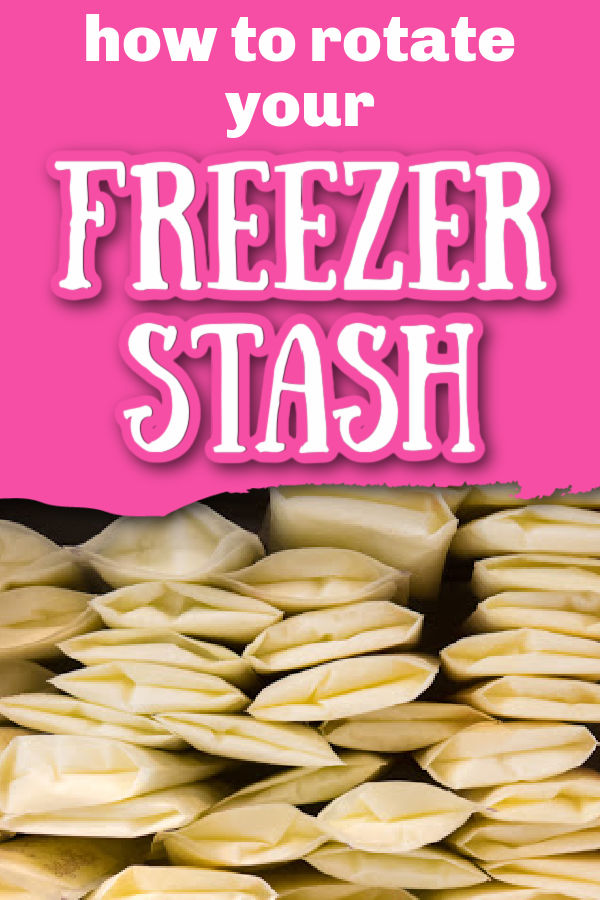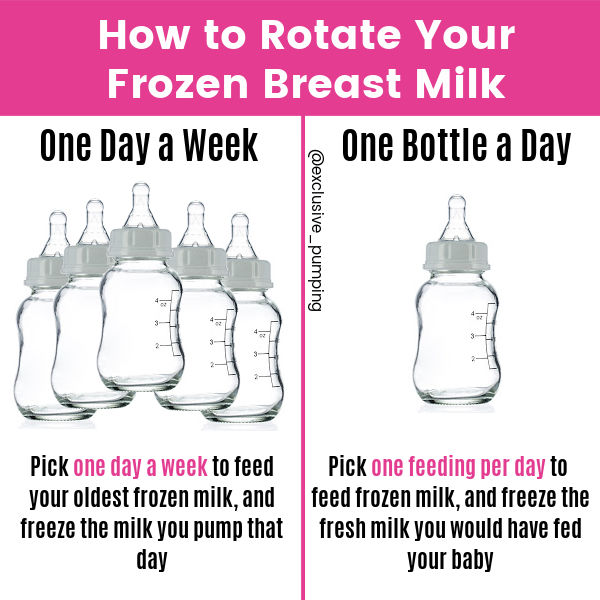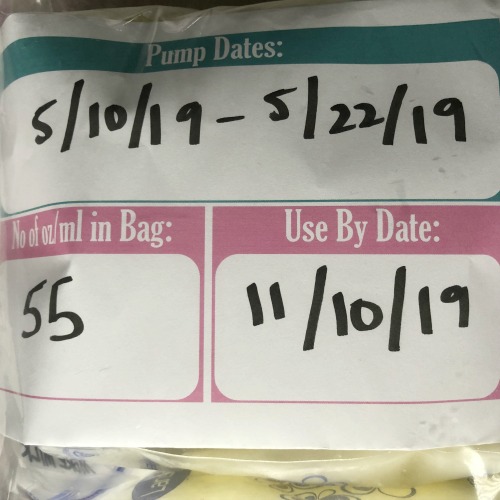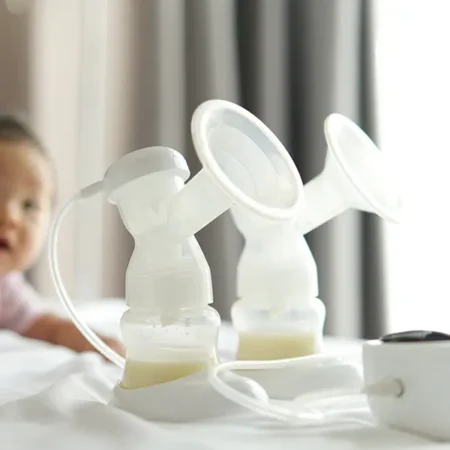If you are an exclusive pumper that has enough supply to pump extra milk, it’s a good idea to start freezing your milk in breast milk bags and building up some breast milk freezer storage.
A freezer stash can be great for peace of mind: it makes it easier not to cry over spilled breast milk, it’s there if you experience a drop in supply, and it helps you not throttle your partner when they accidentally leave the daycare bottles out overnight on the counter. (Not that that has happened to me.)
Breast milk doesn’t last in the freezer indefinitely, though. Here is how to help make sure you don’t waste any milk by rotating your freezer stash.

This post may contain affiliate links, which means that if you click through and make a purchase, I’ll be compensated at no additional cost to you. I only recommend products I love! More info here.
How long can breast milk be kept in the freezer?
The length of time that frozen breast milk will be good in the freezer depends on the type of freezer that you are using (more information is available here):
- In a freezer compartment (like in a mini-fridge): 2 weeks
- In any other type of freezer: Up to 6 months is ideal, up to 12 months is acceptable
(Note: The CDC recently stopped distinguishing between regular freezers and deep freezers, so these guidelines are now more straightforward.)
Therefore, depending on how long you want to feed your baby breast milk, the earliest milk that you freeze may not last as long as you need it to.
This is where rotating your freezer stash come in. Rotating your freezer stash means using the oldest milk that you have on hand to feed your baby, while the newer milk that you pump goes into the freezer to replace it.
Rotating frozen breastmilk: How should I use my freezer stash of breast milk?
There are a couple of different approaches that you can take to rotating your freezer stash.
Here are the two that I used:
1. Pick one day each week where you baby only eats frozen milk
On this day, you’d feed your baby your oldest frozen milk. Then, all of the milk that you pump that day (that you would have fed to your baby) goes into the freezer.
So, for example, let’s say every Monday is frozen milk day. You’d freeze everything that you pump that day (you can do it all at once at the end of the day or on Tuesday mornings), while feeding baby the oldest milk that you have frozen.
You can prep all of the bottles on Sunday night by thawing in cold water, or defrost the milk as you need it – whatever works best for you.
2. Every day, give your baby one frozen milk bottle
To do this, you’d designate one bottle per day as the “frozen” bottle. This could be at any time of the day, it doesn’t matter when (and it could be different times on different days, or always the same routine).
Then, you’d freeze the milk that you would have fed your baby at that feeding.
One advantage of this method is that your baby still gets fresh milk, with all of its antibodies, every day. The main disadvantage is that you have to deal with defrosting and freezing milk every day. Fresh milk is easier to manage.

When should I start using my frozen breast milk?
You should start using your frozen breast milk within a couple weeks of starting a freezer stash.
Some people have a lipase issue where their milk starts to taste bad after some time passes. For these people, fresh milk and even milk that’s been refrigerated for some time may taste fine to their baby, but milk that has been frozen tastes soapy. Some babies will refuse this milk due to the taste.
There is a way around this – you can scald your breast milk after you pump it – but once the milk is off, it’s off, and scalding won’t work.
Because you don’t want to build up a huge freezer stash of milk your baby won’t drink, it’s a good idea to start using it right away to test for this issue, even if it’s just a few bottles a week to rotate out old milk.
Is there anything I can do to make dealing with my breast milk freezer storage easier?
Freeze your breast milk flat (like bricks) in your breast milk bags – they take up less room this way.
In order to know what milk is the oldest, you’ll want to make sure that you label the breast milk bag with the date (if you’ve combined milk from more than one day in the bag, use the earlier date).
Then, organize your bags so you don’t have to spend a lot of time digging to find the oldest ones. Some people put their bags into zip-top plastic bags and then put a large label on the bag with the dates, so they are easy to find:

If you’d like to store frozen breast milk and then wean when you have enough to make it to your goal, here are some tips and things to consider.
If you’re not sure whether or not your milk is still good, you can test it with MilkStrips. (More on these here.)
Finally, as you rotate your milk, if you find that you have too big of a freezer stash (i.e., no room for grown-up food), you can consider donating your breast milk to a milk bank.
Do you rotate your milk? Tell us how you do it in the comments!
References- Bonyata, Kelly. “Human Milk Storage – Quick Reference Card.” https://kellymom.com/store/freehandouts/milkstorage01.pdf
- CDC. “Proper Storage and Preparation of Breast Milk.” https://www.cdc.gov/breastfeeding/recommendations/handling_breastmilk.htm
















